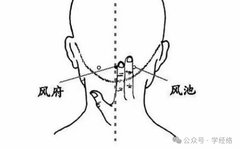
1. Common Acupuncture Points in TCM
1. Fengchi (Wind Pool) Point: This point is known for its ability to treat most wind-related diseases. Fengchi point is located at the back of the neck, just below the occipital bone, in the depression between the two large tendons, level with the earlobe. It is often used in conjunction with other points such as Cuanzhu (Gathering Bamboo), Taiyang (Sun), Jingming (Bright Eyes), and Sibai (Four Whites) to treat eye diseases and alleviate symptoms. Massaging these points, along with cervical spine adjustments, can effectively treat myopia. Additionally, massaging Fengchi point and surrounding muscles can relieve cervical spondylosis, headaches caused by external wind-cold or internal/external wind pathogens, and neck fatigue from prolonged head-down work. Lightly tapping Fengchi point during work breaks can refresh the mind and eliminate fatigue.
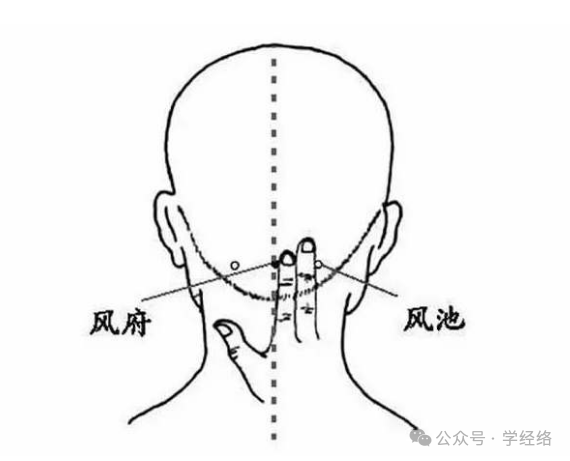
2. Zhongwan (Middle Cavity) Point: This point is beneficial for the stomach. Zhongwan point is located on the midline of the abdomen, at the midpoint between the xiphoid process and the navel. Pressing this point may elicit a sour pain sensation. Individuals with stomach issues can frequently massage Zhongwan point. For acute stomach pain, pressing Zhongwan point for 10 seconds, releasing, and repeating for three to five minutes can alleviate symptoms. For chronic stomach discomfort, gentle rubbing of Zhongwan point can promote digestion. Patients with acute gastroenteritis can massage Zhongwan point along with Tianshu (Heavenly Pivot) point (located 2 inches beside the navel) and Daju (Great Pivot) point (located 2 inches below the navel) for combined treatment.
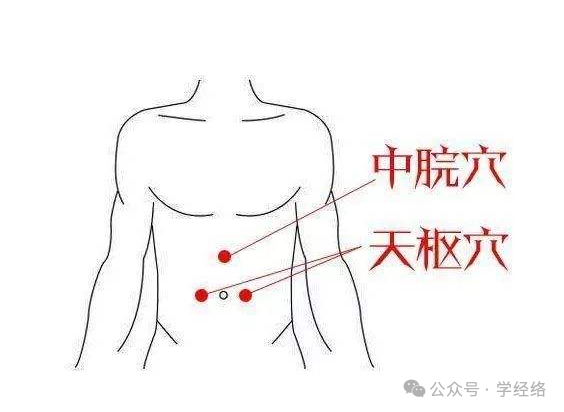
3. Guanyuan (Gate of Origin) Point: This point nourishes the kidneys and stabilizes essence. Guanyuan point is located 3 inches below the navel (approximately the width of four fingers excluding the thumb). Massaging Guanyuan point can replenish kidney qi and delay aging. For men, it can alleviate kidney deficiency, lower back pain, and hair loss. For women, it can treat and relieve many gynecological conditions. Before massaging Guanyuan point, warm the palms and rub the point in a circular motion, gradually increasing pressure until warmth is felt.4. Neiguan (Inner Pass) Point: This point protects the heart. Neiguan point is located on the inner forearm, two finger widths above the wrist, between the two tendons. Massaging Neiguan point helps to promote blood circulation. Pressing down with the thumb for about 3 minutes until a sour or numb sensation is felt is recommended. In addition to protecting the heart, Neiguan point is an emergency point; if a patient experiences a heart attack, lying down and massaging Neiguan point can help alleviate pain while waiting for emergency assistance. Furthermore, massaging Neiguan point can relieve headaches, dry mouth, sore throat, cervical spondylosis, shoulder periarthritis, and lower back pain.
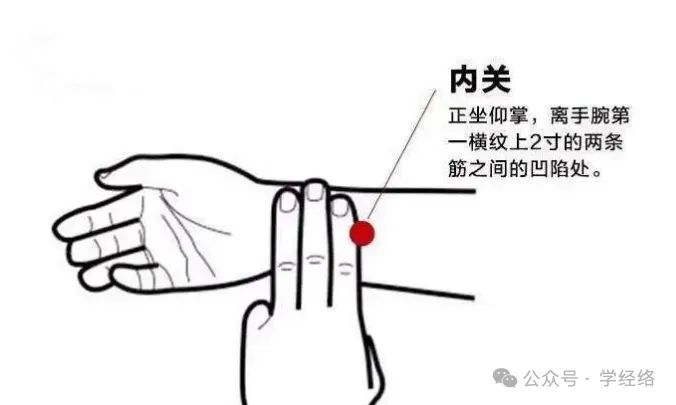
5. Hegu (Union Valley) Point: This point clears heat and alleviates pain. Hegu point, also known as the Tiger’s Mouth, is located at the highest point of the muscle between the thumb and index finger when they are brought together. Hegu point has the effect of clearing heat and calming pain, making it effective for treating head and facial diseases. For headaches and fevers caused by wind-heat colds, if medication does not provide immediate relief, pressing Hegu point can help. The pressure should be firm enough to feel soreness, numbness, or swelling. If accompanied by fever, scraping the skin at the back of the neck with a porcelain spoon or pinching the surrounding skin until it turns red or purple can help expel heat toxins and reduce fever quickly.
2. Acupuncture Points for Alleviating Dysmenorrhea
1. Pressing Guanyuan Point: [Massage Principle]: It can regulate women’s physiological state and improve symptoms of dysmenorrhea and diarrhea. [Quick Location]: Measure down 4 finger widths from the center of the navel to find Guanyuan point. [Massage Method]: With Guanyuan as the center, use the left or right palm to massage in a clockwise and counterclockwise direction for 3-5 minutes, then press Guanyuan point while breathing for 3 minutes.
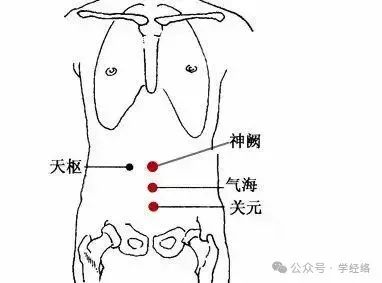
2. Pressing Sanyinjiao (Three Yin Intersection) Point: [Massage Principle]: It promotes the downward flow of menstrual blood, helping to expel stagnant blood and reduce pain. [Quick Location]: Located on the inner side of the lower leg, 4 finger widths above the inner ankle is Sanyinjiao point. [Massage Method]: Use the thumb to press Sanyinjiao point 20 times, both sides can be done simultaneously.3. Pressing Dijie (Earthly Pivot) Point: [Massage Principle]: It has the effect of strengthening the spleen, draining dampness, and regulating menstruation, which can alleviate menstrual pain. [Quick Location]: Located 4 finger widths below Yinlingquan (Yin Mound Spring) point is Dijie point. [Massage Method]: Use the index finger to press Dijie point vertically for 1 minute with light pressure.
3. Acupuncture Points to Enhance Male Sexual Function
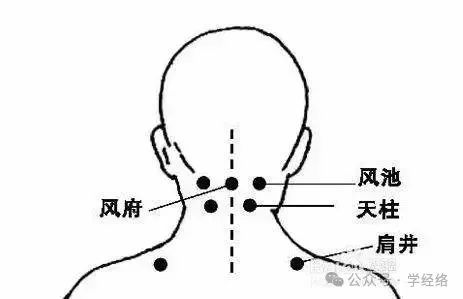
1. Tianzhu (Celestial Pillar) Point (Head): Tianzhu point is located in the depression just below the back of the neck, about 2 cm lateral to the midline of the occipital hairline. Use the thumb to massage this area.2. Zhongfu (Middle Palace) Point (Chest): Zhongfu point is located in the upper outer part of the chest, in the first intercostal space, 6 inches lateral to the midline. This major point on the lung meridian can help smooth the lung meridian, promote breast enhancement, and improve lymphatic circulation, alleviating chest tightness and shoulder/back pain.3. Qihai (Sea of Qi) Point (Abdomen): Qihai point is located in the lower abdomen, dividing the line between the navel and the pubic bone into ten equal parts; it is located at the 3/10 position from the navel. Massaging Qihai point can tonify qi, assist yang, regulate menstruation, and enhance libido, aiding in the treatment of nocturnal emissions, erectile dysfunction, premature ejaculation, and spermatorrhea.4. Guanyuan (Gate of Origin) Point (Abdomen): Guanyuan point is located on the midline of the abdomen, 3 inches below the navel. It tonifies qi, nourishes the middle, warms the kidneys, strengthens the spleen, and enhances libido, treating male sexual dysfunction, premature ejaculation, poor appetite, and fatigue.
4. Acupuncture Points for Alleviating Tooth Pain
For tooth pain, the first two points are particularly effective, especially for wind-heat tooth pain, while kidney deficiency tooth pain is also effective but requires a longer treatment duration. The first point: Jiache (Jaw Chariot) Point, located 1 inch anterior and superior to the angle of the mandible. The second point: Xiaguan (Lower Pass) Point, located below the zygomatic arch at the temple. For upper tooth pain, use Xiaguan point; for pain in both upper and lower teeth, use Jiache point. These two points can be pressed or tapped with a skin needle until redness or slight bleeding occurs. Xiaguan point should also be massaged or tapped for one to two hundred times.

Distal points for treating wind-heat tooth pain: Distal Point 1: Hegu (Union Valley) Point for lower tooth pain, a special point located between the first and second metacarpal bones, slightly closer to the midpoint of the second metacarpal. Another method to locate Hegu point is to place the fingers side by side; the highest point between the thumb and index finger is Hegu point. The third method is to open the thumb and index finger, crossing the two tiger mouths, with one thumb pointing towards the midpoint of the second metacarpal of the other hand. Hegu point is primarily used for lower tooth pain, and pressing along the meridian is recommended; moxibustion should not be used at this time. Distal Point 2: Neiting (Inner Courtyard) Point for upper tooth pain, located between the second and third toes. Pressing this point is recommended, but skin needles can be more effective; tapping with the small end of the skin needle until bleeding occurs is advised. The method for treating kidney deficiency tooth pain combines upper and lower teeth with kidney tonifying points: Kidney Tonifying Point 1: Taixi (Supreme Stream) Point, located in the depression between the medial malleolus and the Achilles tendon; Kidney Tonifying Point 2: Zhaohai (Shining Sea) Point, located in the depression below the medial malleolus; Kidney Tonifying Point 3: Yongquan (Gushing Spring) Point, located in the depression at the front of the foot between the second and third toes, one-third of the distance from the toes to the heel. The method for treating kidney deficiency tooth pain involves pressing and tapping with skin needles; each point should be pressed for two to three minutes, followed by tapping with skin needles, and bleeding should not occur at these points; moxibustion is generally not recommended.
5. Acupuncture Points for Alleviating Knee Joint Pain
Dubin (Duhuo) Point is located in the depression on either side of the patellar ligament below the kneecap, known as the outer knee eye. This area is susceptible to wind; massaging this point can dispel wind, scatter cold, and invigorate blood circulation, making it very effective for treating knee joint pain. Technique: Pressing or tapping this point with a pressure that induces a sour or aching sensation is appropriate for three to five minutes. Regular massage can also serve a preventive purpose.

Zusanli (Leg Three Miles) Point is located on the stomach meridian and is very effective for treating gastrointestinal function, also beneficial for knee joint pain, especially in elderly degenerative arthritis with qi and blood deficiency. Zusanli point is located four finger widths below the outer knee eye. Yanglingquan (Yang Mound Spring) Point is located below the fibula head on the outer side of the knee joint, in the depression below the highest point of the fibula. Massaging this point can nourish the knee joint, alleviating aging. Technique: Pressing or tapping Yanglingquan point is also effective.

